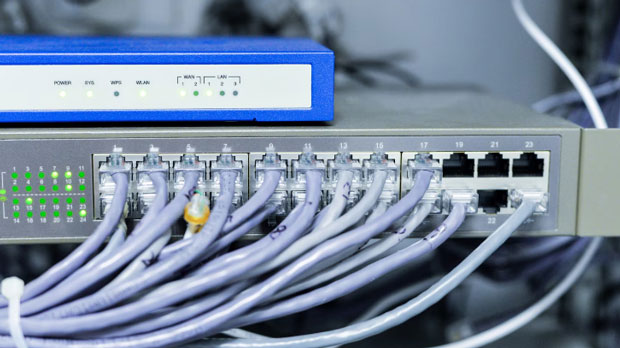Dynamic proxy crawling has become an essential tool for data collection in various industries, allowing businesses to access large amounts of data from websites without being blocked or limited by anti-scraping mechanisms. In this context, two popular proxy services – PYPROXY and CroxyProxy – stand out for their ability to handle dynamic content efficiently. However, how do they compare in terms of crawling efficiency when dealing with dynamic proxies? This article explores the efficiency of both PyProxy and CroxyProxy in dynamic proxy scenarios, examining key performance indicators such as speed, reliability, ease of use, and adaptability to different types of web structures. By comparing the strengths and weaknesses of each service, we will provide valuable insights for customers looking to make informed decisions about which proxy service best meets their needs.Introduction to Dynamic Proxy CrawlingDynamic proxy crawling refers to the technique of using rotating proxies or proxy networks that can seamlessly change IP addresses to bypass geo-restrictions, rate limits, and anti-scraping measures. It enables continuous access to websites while masking the real IP address. Dynamic proxies are especially valuable for crawling websites that load content via JavaScript, which traditional static proxies struggle to handle effectively.Websites often implement JavaScript and AJAX to load content dynamically, meaning that the content is not present in the initial HTML page source. To scrape this type of data, crawlers need a proxy solution capable of rendering JavaScript and simulating user interactions. Here, PyProxy and CroxyProxy both offer dynamic proxy solutions, but their efficiency and effectiveness in such environments can vary significantly.PyProxy OverviewPyProxy is a Python-based proxy tool that offers both rotating proxies and dynamic IP switching features. It is widely used in web scraping and data collection tasks, providing several benefits such as speed, security, and flexibility. With PyProxy, users can implement a dynamic proxy system that changes IP addresses at specific intervals, reducing the risk of detection by websites.One of PyProxy’s standout features is its integration with Python’s rich ecosystem, allowing for custom configurations and automation in web scraping tasks. It supports both HTTP and HTTPS protocols, ensuring compatibility with most websites. PyProxy also offers easy setup and reliable performance, making it a popular choice for developers and advanced users.CroxyProxy OverviewCroxyProxy, on the other hand, is a web-based proxy service designed for ease of use, particularly for individuals who are not necessarily familiar with programming. It provides dynamic proxy solutions through its browser-based interface, allowing users to access websites without configuring complex scripts or proxies manually. While its main focus is on offering a user-friendly proxy experience, it also supports dynamic proxy functionalities that enable users to bypass content restrictions on websites that use JavaScript and other dynamic loading techniques.CroxyProxy offers a more accessible and beginner-friendly solution for proxy crawling. It supports various features such as SSL encryption, session persistence, and automatic IP rotation, making it an efficient option for web scraping without requiring in-depth technical knowledge.Comparison of Dynamic Proxy Crawling EfficiencyWhen comparing PyProxy and CroxyProxy in terms of dynamic proxy crawling efficiency, several factors come into play: speed, reliability, ease of use, and adaptability. Let’s break down each of these elements for a clearer picture.Speed and PerformanceSpeed is one of the most critical factors when evaluating a proxy service for dynamic crawling. Websites using JavaScript or other dynamic elements tend to load slowly, especially when accessed via proxies. The quicker the proxy can deliver content to the user, the more efficient the crawling process will be.PyProxy generally offers faster speeds, primarily due to its customization and direct integration with Python’s libraries. Advanced users can fine-tune the service to optimize speed for specific scraping tasks. The Python codebase also allows PyProxy to efficiently manage a large number of proxy connections, ensuring minimal latency when rotating proxies.CroxyProxy, while generally reliable, may experience slower speeds when compared to PyProxy. As a web-based service, it may face latency due to server congestion or other external factors, affecting performance. However, for less technically demanding tasks, CroxyProxy can still provide a solid solution for dynamic proxy crawling, though it may not match PyProxy in raw speed.Reliability and UptimeReliability is crucial for any proxy service, especially when performing large-scale web scraping. Inconsistent proxy performance can result in failed requests, IP blocks, and delays, which ultimately hinder the crawling process.PyProxy offers high reliability due to its rotating proxies and customizability, which ensures that users are less likely to encounter connection issues or IP blocks. Additionally, users can set up automatic retries or failover protocols, enhancing the reliability of their scraping operations.CroxyProxy, being a web-based service, depends heavily on its server infrastructure. Although it is reliable for everyday use, it may not perform as consistently under high demand or large-scale crawling operations. Nevertheless, for smaller-scale or less demanding tasks, CroxyProxy can be a reliable choice, with fewer chances of running into proxy-related errors.Ease of Use and ConfigurationEase of use is one area where CroxyProxy shines. It is designed for users who may not have coding experience or prefer a simpler solution to proxy crawling. The interface is user-friendly, and it doesn’t require any complex configuration. Users simply need to input the URL they wish to access, and CroxyProxy takes care of the rest, including IP rotation and security measures.In contrast, PyProxy requires more technical knowledge, particularly when it comes to setting up and configuring custom proxies. While its flexibility and integration with Python offer advanced users a powerful tool for web scraping, beginners may find the setup process daunting. However, for those willing to invest the time to learn, PyProxy provides a much more customizable experience, with greater control over proxy rotation, IP management, and scraping speed.Adaptability to Dynamic Web ContentWhen it comes to handling dynamic content, both PyProxy and CroxyProxy are equipped to handle websites that rely heavily on JavaScript and other dynamic content loading techniques. However, PyProxy has the advantage of being able to integrate directly with web scraping libraries like Selenium, which can interact with JavaScript-based elements and simulate user actions.CroxyProxy, while capable of accessing dynamic content, may not be as adaptable to complex scraping tasks as PyProxy. Its browser-based nature limits its ability to handle intricate scraping scenarios, especially when dealing with heavily dynamic websites that require interaction or custom configurations.In conclusion, both PyProxy and CroxyProxy offer valuable solutions for dynamic proxy crawling, but they cater to different user needs. PyProxy excels in speed, reliability, and adaptability, making it the preferred choice for advanced users and large-scale scraping operations. Its Python integration offers great flexibility, allowing users to fine-tune their crawling processes and optimize performance.On the other hand, CroxyProxy stands out for its ease of use and accessibility, making it an excellent option for beginners or those who need a simple, straightforward proxy service. While it may not match PyProxy in terms of speed or customization, it is a reliable and user-friendly tool for those who require less technical involvement.Ultimately, the choice between PyProxy and CroxyProxy depends on the complexity of the tasks at hand, the level of technical expertise, and the specific requirements of the web scraping project.
Sep 28, 2025



































































